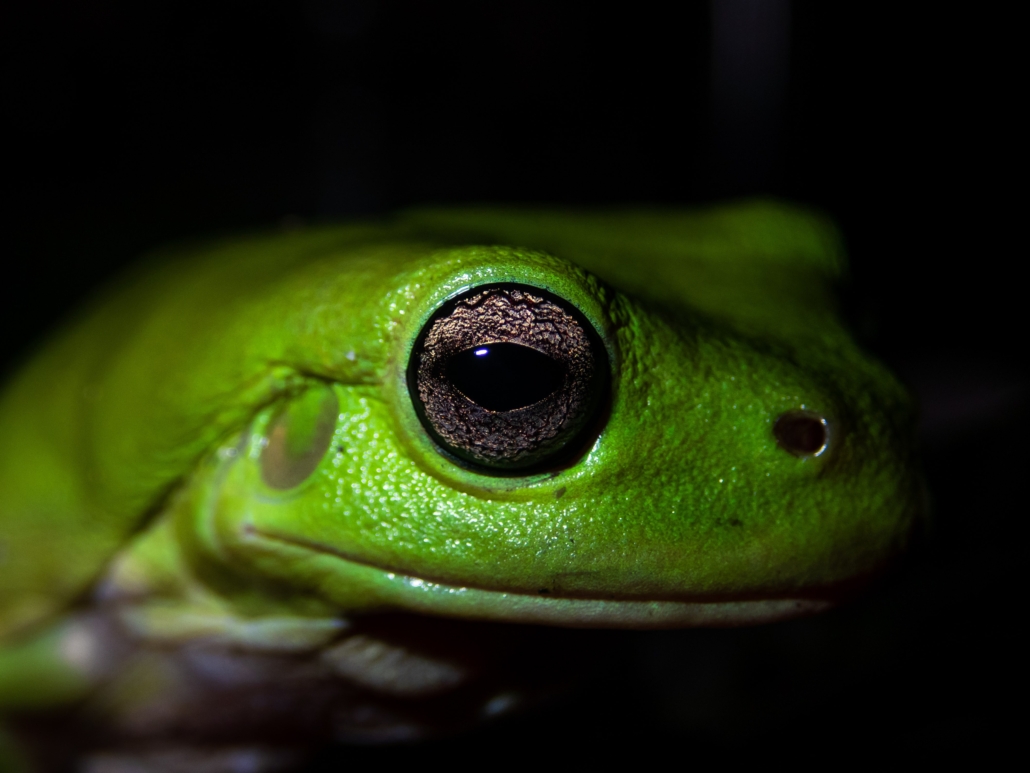Can you Hear them on a Quiet Night?
Published 24th March 2023. Written by Maddison O’Brien
There’s something so delightful about a quiet evening when you’re close to freshwater, and the chorus of frogs starts to call. From the high delicate calls of the Eastern common froglet to the low gulp of the Eastern Banjo frog, our region’s diversity of frog species is profound! We can often hear the frogs without seeing them, and their sounds can tell us quite a lot about the health of our environment if you listen closely
Frogs are what are known as indicator species. They are sensitive creatures that are often the first to be affected by changes in the ecosystem. Their abundance reflects the condition of the environment. For example, after the black summer bushfires, frogs were particularly interesting to scientists as they are a critical species in the food web. Their recovery gives clues to the health of life on land and in water. Frogs are prey animals at all stages of theirs. When frogs are abundant, their predators are well-fed and can have more healthy offspring too! Frogs feed on insects and small invertebrates, so their numbers also tell us more about the insect population, which many animals rely on for food.
Can you hear frogs in your environment? How many different types of calls can you make out? The absence of frogs, especially after rain or near water bodies, can indicate pollution or disturbance of habitat. Frogs have permeable skin that absorbs oxygen—and toxins. As a result, they’re susceptible to changes in air and water quality. They’re often the first animals, for example, to be affected by pesticide use. Polluted water in drains and waterways can also lead to a decline in frog numbers, affecting other species in the food chain.

The iconic Green Tree Frog is an adaptable species that can be found in our region Photo by Joan Li on Unsplash
The Mid Western Region is home to some elusive and iconic frog species. The Green Tree Frog is commonly spotted, and some of the lesser-known species are the Peron’s Tree Frog, Water-holding Frog, Barking Marsh frog, Banjo Frog and the endangered Yellow Spotted tree frog. Frog numbers Australia-wide have been declining, especially after drought, fires and due to human impact. We must look after these diverse creatures and pay attention to their presence.
We can help scientists collect critical information about frog numbers through citizen science initiatives. You can download FrogID on your phone, record the calls around you, and send them off to be analyzed; it’s easy! This is an exciting process; you get results back listing what species are present. Getting creative with improving frog habitat options is a great way to increase their numbers. Think about the quality of water sources for breeding. Perhaps you could add some rocks, logs and plants that frogs might use as shelter or hunting grounds. For more information on Frogs and how to help them go to watershedlandcare.com.au/resources




